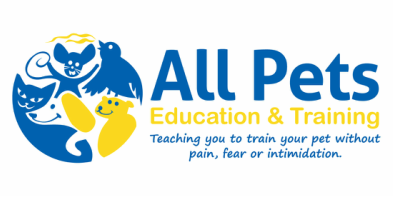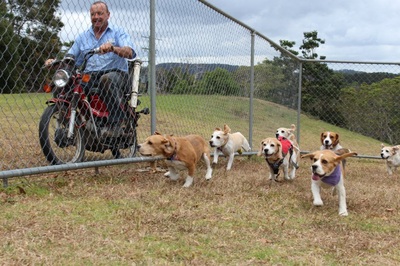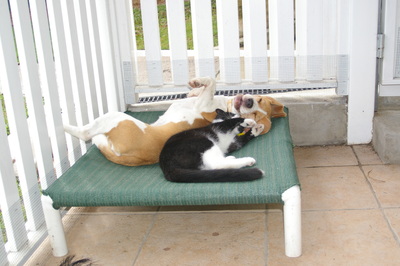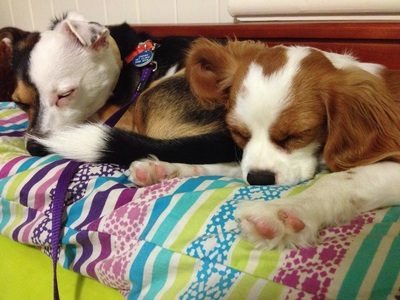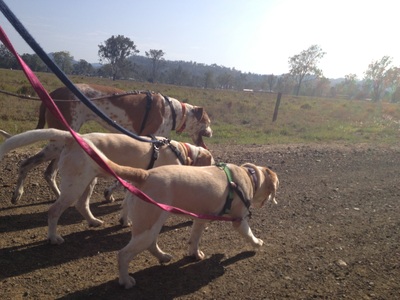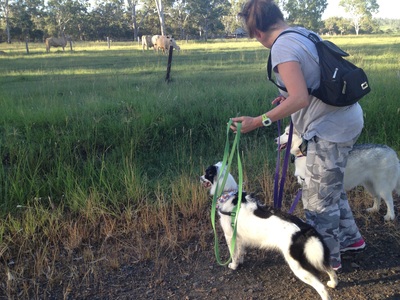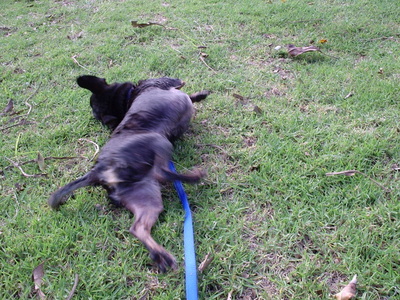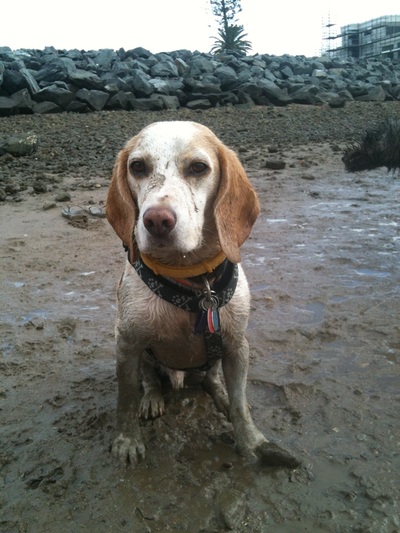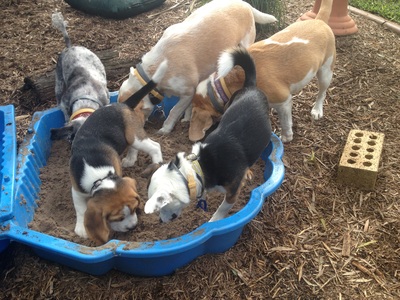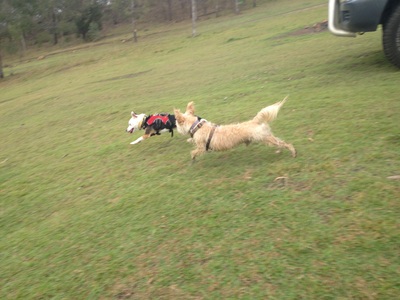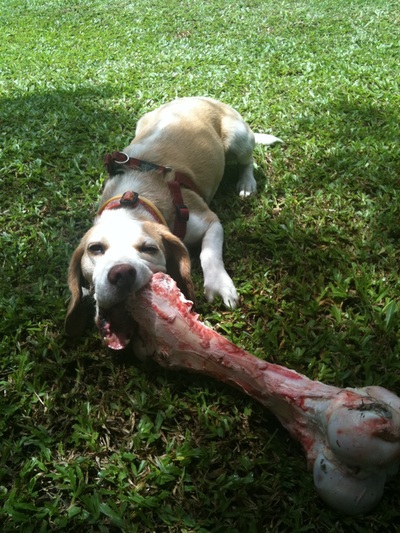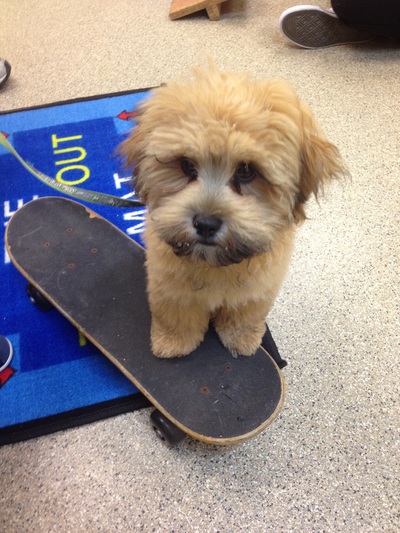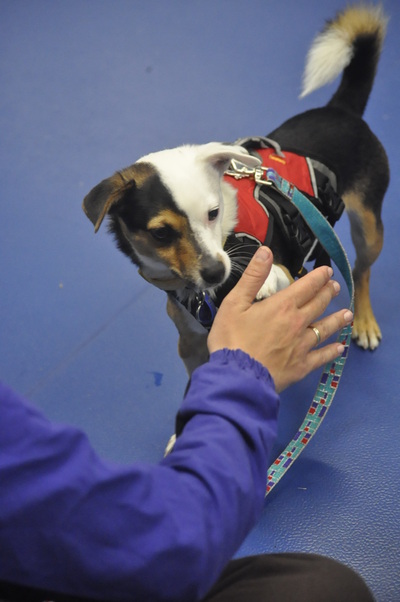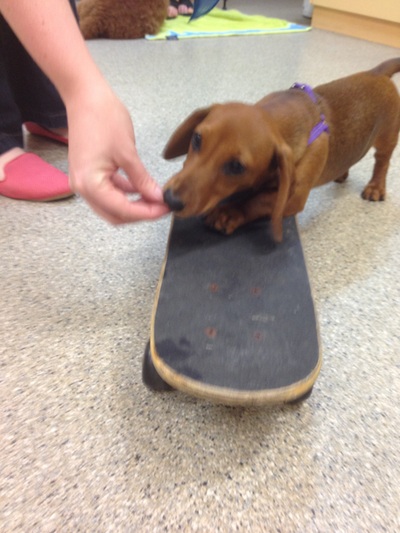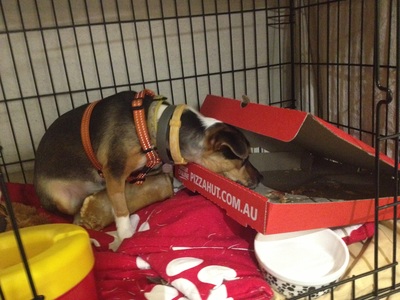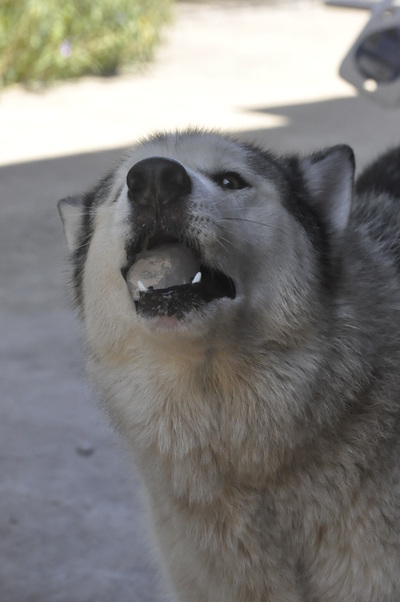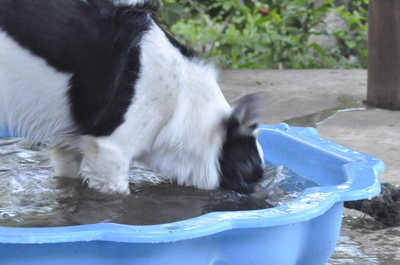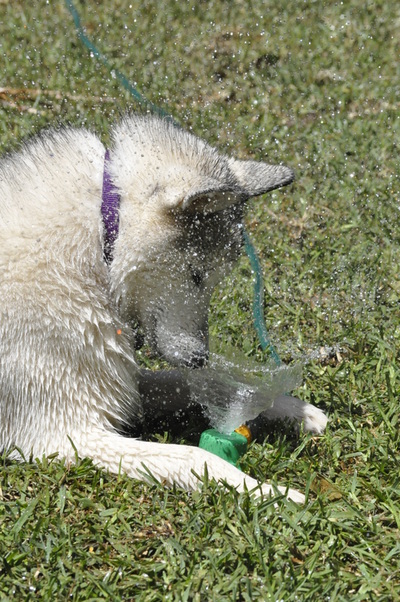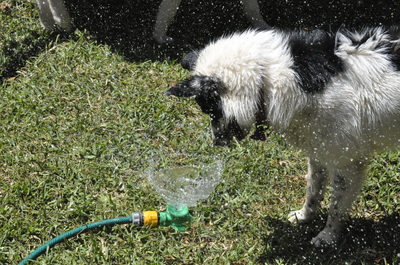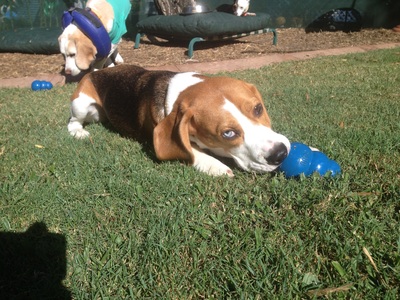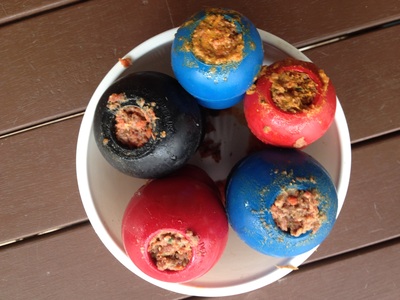Enrichment for Dogs
Enrichment makes something more meaningful, substantial, or rewarding.
Enrichment improves something. (Vocabulary.com)
Enrichment improves something. (Vocabulary.com)
Enrichment can be broken down into types such as social, life, training and environmental
Social – any interaction between animals (does not need to be same species) that does not involve conflict.
Taking your dog for a walk with his/her doggy pals is social enriching.
Hanging out with you is socially enriching.
Watching the cow in the distance is socially enriching.
Life Enrichment – allowing your dog to be a dog. Dogs like to dig – give them a digging area. Dogs like to run – allow them to run in a safe and secure environment. Dogs like to roll in all sorts of stuff. Dog need to chew - provide them with safe chewing options.
Dogs like to sniff - its part of who they are. Did you know, Beagles are bred to smell? They have a nose that has over three hundred million sensory receptor sites compared to a humans mere six million (50 times greater smellability) they are the perfect candidate for sniffing out yesterday, last weeks and probably last months peemail. So let your dog stop and sniff sometimes on your morning walks.
Dogs like to sniff - its part of who they are. Did you know, Beagles are bred to smell? They have a nose that has over three hundred million sensory receptor sites compared to a humans mere six million (50 times greater smellability) they are the perfect candidate for sniffing out yesterday, last weeks and probably last months peemail. So let your dog stop and sniff sometimes on your morning walks.
Training Enrichment – Set aside a few minutes each day to spend time with your dog and teach him some cool tricks. It doesn’t take much to have them looking like stars. Try Shake a paw, Beg, Hand Target and so many more. If you are stuck for ideas, check the YouTube channel’s Kikopup or JustJesse.
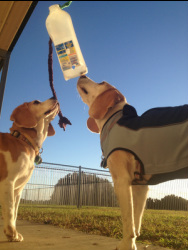
Environmental Enrichment – This is the biggest of all and involves you adding things to your dog’s environment that he or she finds valuable.
Mostly this will involve food or toys. Having your dog work for things makes them even more valuable – this includes his or her daily food intake. Toss out your dog's bowl now and watch your dog become a working pooch and work for his or her breaky and dinner.
Consider adding a sandpit with hidden treats and goodies.
Or a hanging milk bottle with small holes cut in the bottom – place a ration of your dog’s daily diet in the milk bottle. Either hang the bottle just above your dog’s nose height, or add a tug rope and tie it higher. Now show him or her how it works. Bump the bottle and allow a few bits of kibble to fall out. Your dog will soon get the idea.
Mostly this will involve food or toys. Having your dog work for things makes them even more valuable – this includes his or her daily food intake. Toss out your dog's bowl now and watch your dog become a working pooch and work for his or her breaky and dinner.
Consider adding a sandpit with hidden treats and goodies.
Or a hanging milk bottle with small holes cut in the bottom – place a ration of your dog’s daily diet in the milk bottle. Either hang the bottle just above your dog’s nose height, or add a tug rope and tie it higher. Now show him or her how it works. Bump the bottle and allow a few bits of kibble to fall out. Your dog will soon get the idea.
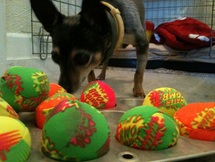
Another homemade favorite is a muffin tin with kibble hidden under balls. You will need various sized balls etc for the muffin tin and suitable to the size of the dog.
If you are in a hurry, why not stuff some biscuits in an empty box, scatter a handful of food through the grass, or give your dog a previously prepared frozen dilute chicken stock popsicle.
Other simple forms of enrichment could be water play – fill a clam shell pool with water, dunk some treats, turn on a sprinkler and add the dog
There are also many great commercial products available for dogs.
All dogs should have at least 2 kongs. Make sure you choose a kong that is appropriate to the size of your dog and the strength of their jaws. Black kongs are the strongest, followed by blue and then red. These really are great versatile toys. You can smear some peanut butter inside for a quick treat, or pop a large dog biscuit inside and allow your dog to hunt for their food. They are great for packing wet food, meat, barf, and pasta into and allowing your dog to work hard to get it out. For dogs that are super quick, try freezing a stuffed kong, and even better freeze a stuffed kong inside a bucket of dilute chicken stock – your dog now has to lick or chew through the ice before it reaches the big treat inside. This is also great for those teething pups. For recipe ideas click here.
All dogs should have at least 2 kongs. Make sure you choose a kong that is appropriate to the size of your dog and the strength of their jaws. Black kongs are the strongest, followed by blue and then red. These really are great versatile toys. You can smear some peanut butter inside for a quick treat, or pop a large dog biscuit inside and allow your dog to hunt for their food. They are great for packing wet food, meat, barf, and pasta into and allowing your dog to work hard to get it out. For dogs that are super quick, try freezing a stuffed kong, and even better freeze a stuffed kong inside a bucket of dilute chicken stock – your dog now has to lick or chew through the ice before it reaches the big treat inside. This is also great for those teething pups. For recipe ideas click here.
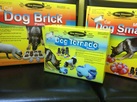
Other commercially available toys are Nina Ottosson toys – these are food dispensing toys of various difficulty. They are great toys, however for most dogs they should be given only under supervision.
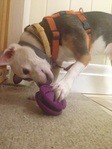
Busy Buddy by Premier make a range of food dispensing toys. They are also good toys and are generally long lasting.
Providing your dog with entertainment throughout the day will help prevent and manage many undesirable behaviours such as digging, barking, chewing and escaping to name just a few.
Providing your dog with entertainment throughout the day will help prevent and manage many undesirable behaviours such as digging, barking, chewing and escaping to name just a few.
Please supervise your dog when first introducing any toy to ensure his or her safety. You may also need to show your dog how food dispensing toys work – start with it easy and gradually increase the difficulty.
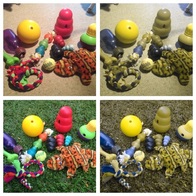
Just one last thing to think about when you do purchase your dog new toys.
Did you know that dogs see in a dichromatic colour scale? This in humans is actually a form of colour blindness. Dogs see in the colours blue, yellow and variations of grey. When choosing toys, especially for our older pets that may have limited or diminished vision, it may be wise to choose toys with a blue or yellow colour.
This is a picture I did of my dogs most commonly used toys. The pictures on the left are how we see them, and those on the right are how your dog most likely perceives them.
Did you know that dogs see in a dichromatic colour scale? This in humans is actually a form of colour blindness. Dogs see in the colours blue, yellow and variations of grey. When choosing toys, especially for our older pets that may have limited or diminished vision, it may be wise to choose toys with a blue or yellow colour.
This is a picture I did of my dogs most commonly used toys. The pictures on the left are how we see them, and those on the right are how your dog most likely perceives them.
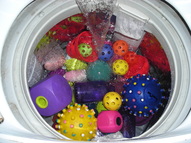
Oh and when your toys get grubby. A handy hint I learnt from a great friend, just pop them in the washing machine on gentle cycle and make sure to rinse them well.
For some more great ideas, follow the link to the Doggy Boredom Busters page below.
For some more great ideas, follow the link to the Doggy Boredom Busters page below.
